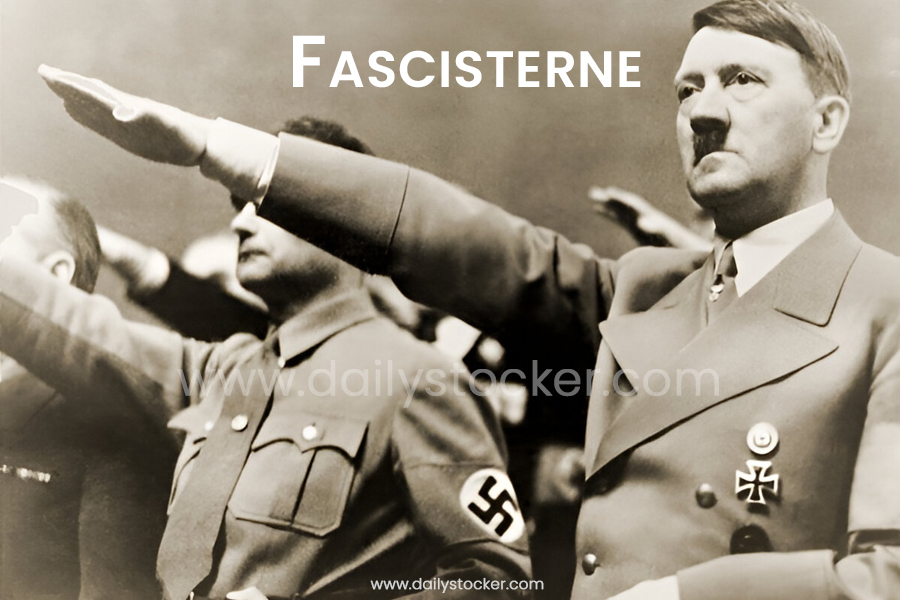Fascisterne: Understanding Meaning, History, Ideologies, and Modern Relevance
Fascisterne refers to organizations, groups, or ideologies that embrace or promote fascist principles. At its core, the word Fascisterne describes movements that value authoritarian control, strict nationalism, and the rejection of democracy in favor of centralized power. When people use this term, they are usually pointing to political or social groups that advocate for order through force, often silencing opposition and reducing individual freedoms for what they see as the “greater good” of the nation.
The origin of the word itself is rooted in fascism, a political system that first appeared in Italy during the early 20th century. After World War I, Europe was shaken by economic collapse, social unrest, and a loss of trust in traditional democratic institutions. In this environment, Mussolini in Italy and later Hitler in Germany rose to power, offering strong leadership, national pride, and promises of revival. Their followers—the early Fascisterne—believed in unity, discipline, and obedience, but this came at the cost of freedom, equality, and peace.
However, Fascisterne is not just a historical term. While classical fascism lost much of its power after the defeat of Axis powers in 1945, the word continues to be used today to describe extremist movements and ideologies that echo similar authoritarian and nationalist traits. Whether in politics, culture, or online communities, the principles that once defined the Fascisterne are still present, sometimes in subtle forms.
Table of Contents
- What Does Fascisterne Mean?
- Origins of Fascisterne in History
- Key Characteristics of Fascisterne Ideology
- Fascisterne in 20th Century Europe
- The Role of Fascisterne in World War II
- Symbols and Propaganda of Fascisterne Movements
- Differences Between Fascisterne and Other Political Ideologies
- The Decline of Classic Fascisterne After 1945
- Neo-Fascisterne: The Rise of Modern Movements
- Fascisterne in Today’s Political Landscape
- Future
- Conclusion
- Frequently Asked Questions (FAQs)
1. What Does Fascisterne Mean?
The term Fascisterne comes from the root word “fascism,” which was first popularized in Italy under Benito Mussolini in the early 20th century. When we refer to Fascisterne, we are usually talking about groups of people, movements, or political organizations that practice or believe in fascist principles.
In essence, Fascisterne reflects authoritarian control, extreme nationalism, suppression of opposition, and a vision of unity that often ignores diversity and individual freedoms.
2. Origins of Fascisterne in History
The roots of Fascisterne can be traced back to post-World War I Europe. Italy’s social unrest, economic instability, and national humiliation after the war created fertile ground for Mussolini’s Fascist Party. Inspired by the Roman “fasces” (a bundle of rods symbolizing power and unity), fascism became a political movement that quickly spread across Europe.
Germany, Spain, and several other countries also witnessed the rise of Fascisterne-inspired groups, which promised order and national pride in times of crisis.
3. Key Characteristics of Fascisterne Ideology
To understand Fascisterne, we need to break down its main features:
- Authoritarian Leadership – Strong leaders with unchecked power.
- Extreme Nationalism – Belief in national superiority over others.
- Anti-Democratic Views – Opposition to free elections and open debate.
- Militarism – Glorification of war and military strength.
- Suppression of Dissent – Censorship, intimidation, or violence against critics.
- Collective Identity – The group’s needs are placed above individual rights.
These features make Fascisterne distinct from other ideologies like liberalism, socialism, or communism
4. Fascisterne in 20th Century Europe
During the 1920s and 1930s, Fascisterne spread rapidly. Italy under Mussolini, Germany under Hitler, and Spain under Franco are the most famous examples. Each adapted fascist ideology to their national context but shared the same authoritarian and nationalist core.
In Germany, Fascisterne evolved into Nazism, combining fascism with racial ideology. In Spain, Franco’s regime maintained power for decades under the banner of fascist principles.
5. The Role of Fascisterne in World War II
World War II was deeply influenced by Fascisterne powers. Germany, Italy, and Japan (though not all identical in ideology) formed the Axis alliance. Their expansionist ambitions, rooted in fascist ideology, triggered one of the deadliest wars in human history.
The fall of Fascisterne regimes after 1945 marked a turning point, but the legacy of their brutality remains a warning.
6. Symbols and Propaganda of Fascisterne Movements
Propaganda played a crucial role in spreading Fascisterne ideas. Posters, newspapers, radio speeches, and films glorified the leader while demonizing enemies. Common symbols included:
- The fasces (bundle of rods with an axe)
- The swastika (in Nazi Germany)
- Uniforms and salutes
These symbols created a sense of belonging and fear at the same time.
7. Differences Between Fascisterne and Other Political Ideologies
While Fascisterne is rooted in fascist thought, it is important to understand how it differs from other well-known political ideologies. At first glance, some features may seem similar—such as the emphasis on unity or government involvement in society—but the deeper goals and values of Fascisterne set it apart. Below are the key differences between Fascisterne and other systems.
8. The Decline of Classic Fascisterne After 1945
The defeat of the Axis Powers in 1945 marked a turning point in world history, bringing with it the sharp decline of classic Fascisterne. Once powerful regimes in Italy, Germany, and Japan collapsed under the weight of military defeat, internal resistance, and global condemnation. Although elements of fascist ideology survived in different forms, the end of World War II effectively dismantled the traditional structures of Fascisterne that had dominated much of Europe.
9. Neo-Fascisterne: The Rise of Modern Movements
Although classic Fascisterne regimes collapsed after World War II, the ideology did not disappear completely. Instead, it re-emerged in new forms, often called neo-fascism. These modern Fascisterne movements adapted fascist principles to changing political and cultural realities while avoiding direct association with the crimes of Nazi Germany or Mussolini’s Italy.
Neo-fascist groups began to appear across Europe, Latin America, and even parts of Asia, especially during periods of economic crisis, social unrest, or rapid cultural change. While smaller in scale than their 20th-century predecessors, these Fascisterne movements have had significant influence in both underground circles and mainstream politics.
10. Fascisterne in Today’s Political Landscape
Although the classic Fascisterne regimes of Mussolini and Hitler were defeated in 1945, the ideology has not vanished. Instead, it has transformed and adapted to modern realities, showing up in new political forms across the globe. Today, Fascisterne movements and ideas often exist at the fringes of politics, but in some countries, elements of fascism have seeped into mainstream debates. Understanding how Fascisterne operate in today’s political landscape is crucial for recognizing the dangers of authoritarianism and protecting democratic values.
11. Future
The future of Fascisterne (the fascists) depends heavily on how societies respond to the underlying conditions that often allow fascist-style ideologies to re-emerge. While classical fascism as seen in Mussolini’s Italy or Hitler’s Germany is unlikely to return in the same form, many of its core elements—ultranationalism, authoritarianism, scapegoating minorities, and suppression of dissent—continue to resurface in new ways. Here’s what the future may hold:
- Instead of calling themselves “fascists,” modern groups adopt softer or disguised labels such as nationalists, traditionalists, or populists.
- The internet, especially encrypted apps, memes, and social media, will remain the main tool for spreading propaganda and recruiting followers.
- Future fascist movements may rely on artificial intelligence, deepfakes, and algorithm manipulation to spread disinformation and polarize societies.
- In times of economic crisis, migration waves, climate stress, or wars, fascist-style movements tend to gain ground by offering simple answers and blaming “outsiders.”
- Authoritarian populist governments in Europe, Asia, and the Americas already show traits that echo fascist thinking.
- Democracies are learning from history—strengthening laws against hate speech, investing in education, and supporting grassroots movements that defend diversity and inclusion.
- Future resilience will depend on media literacy, historical awareness, and strong democratic institutions.
12. Conclusion
The study of Fascisterne is not just about understanding the past—it is also about recognizing patterns that may reappear in the present. Although classic fascism was defeated in 1945, the ideology has re-emerged in different forms worldwide. By learning about Fascisterne, we gain the tools to identify and resist authoritarianism whenever it threatens freedom, democracy, and human dignity.
13. Frequently Asked Questions (FAQs)
Q1: What does Fascisterne mean in simple terms?
It refers to groups or ideologies that follow fascist principles, such as authoritarian rule, extreme nationalism, and suppression of dissent.
Q2: Is Fascisterne the same as Nazism?
Not exactly. Nazism was a form of fascism but with racial ideology at its core.
Q3: Does Fascisterne still exist today?
Yes, while traditional fascism declined after WWII, modern extremist groups still promote similar ideas.
Q4: How can societies prevent the rise of Fascisterne?
Education, strong democratic institutions, free press, and respect for human rights are key defenses.
Don’t miss out on any news—keep in touch for real-time information visit: Daily Stocker
Share this content:








Post Comment